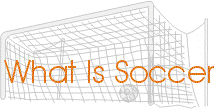
“In the land of the blind, the one-eyed man is king,
Johan Cruyff
but he still only has one eye.”2
While that might sound like a straightforward concept, a glance at many practice fields reveals a perplexing reality. Many practices see players encountering scenarios they rarely face in actual matches. This should lead a coach to question the essence of the practice with a simple inquiry: ‘Does it reflect soccer?’ After all, understanding the game is not unlike understanding the odds in soccer betting – it requires a keen eye for detail and a deep understanding of the game’s dynamics.
Soccer is more than just a sport; it’s a game. Kids engage in an activity that pits them against opponents, emphasizing winning and losing, competition, and teamwork. It’s also a recreational pursuit, with children participating because they enjoy it. They want to play the game.
To play soccer, you need a ball and an opponent. Throw in a field, a couple of goals, sprinkle in some soccer rules, and you’ve got a game of 1v1. But that’s exhausting, and it’s hard to sustain for long. So you bring in teammates and a few more opponents to keep it fair. With these components, you can play soccer all day long.
These elements define soccer. They shape the game. Remove a crucial element like the ball or the opponent, and it ceases to be soccer. Alter an element too much, and you deviate too far from the essence of the game. Playing with two balls or three teams might be entertaining, but is it still soccer? Passing a ball across a grid and running to a corner involves kicking techniques, but is it soccer?
Soccer thrives in chaos. Opponents, teammates, and the ball move in different directions. Players, parents, and coaches shout instructions and information. Bringing order out of chaos is a vital skill in mastering the game.
Soccer is defined by specific elements: a ball, teammates and opponents, a field with boundaries, goals at opposite ends, and soccer rules.
Soccer, like “Being able to recognize constantly recurring situations… is an important precondition for taking the correct action and applying the required technical skill.”
Playing with these elements is fundamental to the American soccer vision. Adjusting the field, goals, number of players, and rules is crucial to the learning process. But how far can you adjust before it’s no longer soccer? A look at two examples in sports offers insight.
Half-court basketball requires all the techniques of basketball. Players must solve real basketball problems against opponents in a game. It’s valuable for developing their basketball skills. However, it lacks one crucial element: direction. Without defending a basket at the opposite end of the court, it falls short of being basketball; it’s basketball-like.
Indoor soccer, with walls, is another example. While it involves direction with goals at each end, the walls change the boundaries significantly. A ball played against them doesn’t go out of play, offering solutions not found in a real game. Indoor soccer can be valuable, but it shouldn’t be confused with soccer. It’s soccer-like.
A soccer-like practice involves solving real soccer problems with technique, insight, and communication. It features competition where both teams face the possibility of winning or losing. While some elements may be missing or altered, the essence remains realistic.
Such practices can be a valuable coaching tool, providing a close-up of the larger picture. While most practice time should be spent playing soccer, soccer-like sessions can address specific problems effectively.
One way to gauge practice effectiveness is by asking, “What are the players learning?” The answer should encompass all three elements of technique, insight, and communication used to solve real soccer problems.
Technique: Are techniques used in match-like situations? Are they relevant to the soccer problem? Insight: Do players understand the problem? How do they solve it? Can the solution be improved? Communication: Do players work well together? Are they in agreement about the plan? Is their timing good?
A practice should address a soccer problem, focusing on improving technique, insight, and communication. When a practice solely emphasizes one element, it loses relevance to the game. Real learning occurs when all three elements are present, and players face real soccer problems.
One principle of American soccer is that children do not spend a lot of time playing soccer. For many, practice time is the primary measure. When practice involves running laps, standing in lines, or listening to lectures, it’s time lost for learning soccer. Such activities may be suitable for highly motivated players but not for the majority. Their time is better spent learning soccer by playing soccer.
Soccer-like activities can be beneficial during breaks or as part of homework and active rest activities.
Note: This website serves as an archived resource for informational purposes only. The content, including advice and tips, is provided as-is and may not reflect the latest practices. Users are encouraged to consult current resources for the most up-to-date information.
This website offers insights into the American soccer vision but doesn’t provide a comprehensive account. It aims to spark interest and promote dialogue about a system that differs significantly from others.
Opponents were not seen as foes to be fought and beaten; rather as posing a problem which had to be solved.
David Winner
Please note that this website is an archived resource and is intended for informational purposes only. The content, including advice, strategies, and tips, is provided as-is from the date of the last update and may not reflect the most current practices or developments in the field. We do not update or maintain the information post-archival. Users are advised to use this site as a historical reference and should consult current resources for the latest information in this area.
